 Politics
Politics  Politics
Politics  Weird Stuff
Weird Stuff Ten Bizarre Facts About The Doge Meme
 Our World
Our World 10 Ways Your Christmas Tree Is More Lit Than You Think
 Movies and TV
Movies and TV The 10 Coolest Stars to Set Sail on The Love Boat
 History
History 10 Things You Didn’t Know About the American National Anthem
 Technology
Technology Top 10 Everyday Tech Buzzwords That Hide a Darker Past
 Humans
Humans 10 Everyday Human Behaviors That Are Actually Survival Instincts
 Animals
Animals 10 Animals That Humiliated and Harmed Historical Leaders
 History
History 10 Most Influential Protests in Modern History
 Creepy
Creepy 10 More Representations of Death from Myth, Legend, and Folktale
 Politics
Politics 10 Political Scandals That Sent Crowds Into the Streets
 Weird Stuff
Weird Stuff Ten Bizarre Facts About The Doge Meme
 Our World
Our World 10 Ways Your Christmas Tree Is More Lit Than You Think
Who's Behind Listverse?

Jamie Frater
Head Editor
Jamie founded Listverse due to an insatiable desire to share fascinating, obscure, and bizarre facts. He has been a guest speaker on numerous national radio and television stations and is a five time published author.
More About Us Movies and TV
Movies and TV The 10 Coolest Stars to Set Sail on The Love Boat
 History
History 10 Things You Didn’t Know About the American National Anthem
 Technology
Technology Top 10 Everyday Tech Buzzwords That Hide a Darker Past
 Humans
Humans 10 Everyday Human Behaviors That Are Actually Survival Instincts
 Animals
Animals 10 Animals That Humiliated and Harmed Historical Leaders
 History
History 10 Most Influential Protests in Modern History
 Creepy
Creepy 10 More Representations of Death from Myth, Legend, and Folktale
10 Passengers Forced To Become Pilots Midair
Statistically, flying is an extremely safe mode of transportation. That doesn’t mean, however, that problems don’t arise from time to time, and when that problem is high in the sky, it’s definitely significant. Aside from mechanical and technological mishaps, poor judgment, disability, health problems, inexperience, lack of training, and loss of consciousness are a few human factors that can turn an ordinary flight into a nightmare.
What happens when passengers are forced to become pilots—in midair? There’s a chance, however remote, that we could find ourselves in just this situation. In that case, not only would our own lives, but those of our friends or family and any other passengers onboard would also be at risk (though reading this list first may help a little). That’s what happened to the people on this list, and this is what they did.
10 Charles Law

When he needed to land a plane, passenger Charles Law, 70, didn’t let his age get in his way. He didn’t let the fact that he was legally blind stop him, either.
In November 1986, Law and his friend, 80-year-old Harry “Buck” Stiteler (the pilot), took off from Cable Airport in Upland, California, 64 kilometers (40 mi) from Los Angeles. Their next stop was Corona Municipal Airport, followed by a stop at Rialto Airport. After lunch, they started their flight back to Upland.
All went well until they began their approach to Cable Airport. That’s when Stiteler lost consciousness. Touching his hand, Law knew his friend was in trouble; he was cold and unresponsive. Law himself used to pilot airplanes similar to the one in which he and Stiteler were in, but that had been before he’d lost most of his sight. With “20-200 vision in his left eye and 20-400 in his right,” he was legally blind, or as Sergeant John Cannon of the Upland police said, “he could barely see in front of his face.”
What could an old, blind man be expected to do under these circumstances? What he did, Cannon said, was to “[land] that thing without crashing.” He somehow “managed to ‘feel’ his way to Cable Airport,” Cannon stated, a feat that seemed impossible. However, not only did he land the airplane intact, but afterward, he “intentionally steered the plane off the runway and onto the dirt,” the lawman declared.
All Law could see on his approach to the runway were “the airport thresholds (white markings),” but that was enough. “I just aimed for that,” Law recalls. “We bounced a little hard and it was a little squirrely, and I guess I was a little crooked. But I thought it was a very good landing,” he judged.
Both he and his friend were rushed to the hospital, but only Law survived. Stiteler was pronounced dead shortly after reaching the hospital. Law wasn’t able to save his friend, but it wasn’t for lack of trying.
9 Victor Consunji
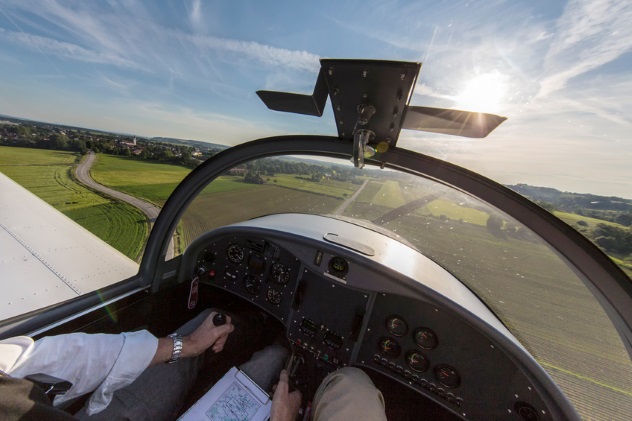
Victor Consunji was a businessman, not a pilot. In February 2000, though, he was both, for a time.
On the way to Manila, Philippines, the 59-year-old pilot of the Cessna of which Consunji was a passenger lost consciousness and died after having a heart attack. Consunji, who had never flown an aircraft of any kind before, was forced to take over the controls. Otherwise, he and the other two passengers aboard would die.
His transmission of his situation—the pilot had died, and he had taken control of the Cessna but didn’t know how to fly it—attracted the attention of a pilot for Asian Spirit, a domestic Philippines carrier. The pilot instructed Consunji how to operate the plane’s controls and read the airspeed and altitude indicators. The pilot warned Consunji not to let the Cessna drop below 160 kilometers per hour (100 mph).
Consunji brought the aircraft down “safely on the water near a beach in the Philippines,” saving himself and the other passengers aboard the plane. Both Consunji and his fellow passengers escaped with only “minor injuries.”
8 Rowan Atkinson

In March 2001, television’s lovable, accident-prone Mr. Bean (aka Rowan Atkinson) had to learn to fly by the seat of his pants. As his chartered Cessna 202 was winging its way from the Ukundu airstrip to Nairobi’s Wilson Airport, his pilot passed out. Besides the unconscious pilot and himself, Atkinson’s wife, Sunetra, and their two children, Ben (age eight) and Lilly (age six), were aboard the aircraft. He had to do something, so he did.
Although he’d never flown before, he took control of the airplane while his wife and children attempted to revive the pilot. Eventually, the unconscious man did wake up, at which point he resumed control of the aircraft and safely landed at the airport. The bumbling “Mr. Bean” had saved the day!
7 Gerry Garapich And Bob Powelson
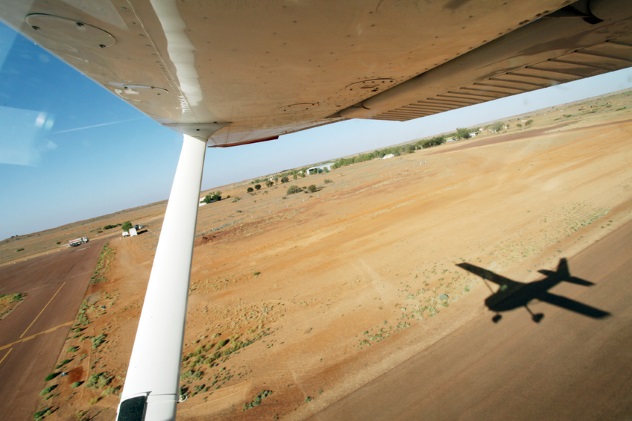
It was May 2005. Douglas R. Reichardt, 49, and his passengers, Gerry Garapich, 60, and Bob Powelson, were flying from North Las Vegas to San Diego. When Reichardt had a heart attack, his passengers had to take the controls.
Near Boulder City, Nevada, Reichardt began to feel sick, and they decided to turn back. He co-owned El Jefe’s Mexican Restaurant & Cantina in nearby Henderson, Nevada, and they’d been flying to California to scout a possible location for another restaurant. As Reichardt approached the North Las Vegas Airport, he had a heart attack and lost consciousness. Garapich “operated the stick,” while Powelson worked the flaps and landing gear. Garapich had piloted a glider 25 years ago. Otherwise, neither man had any flying experience.
As they approached the airport, the plane’s altitude was too high. They aborted the landing, circling three times to “get a feel for the plane.” Then, they descended. Garapich recalls coming down “hard.” The plane came crashing down several hundred feet short of a runway as the passengers attempted to land it, and “pieces of the aircraft’s landing gear and underbelly could be seen scattered around the [airport’s] infield.”
Throughout their ordeal, Garapich’s main concern was that he and Powelson had to survive so they could see their families again. Garapich got his wish. Both men survived, although they were injured in the crash. Garapich sustained two cracked vertebrae, and Powelson needed 17 stitches above his eyes. All three men were taken to Las Vegas’s University Medical Center, where Reichardt died.
6 Doug White
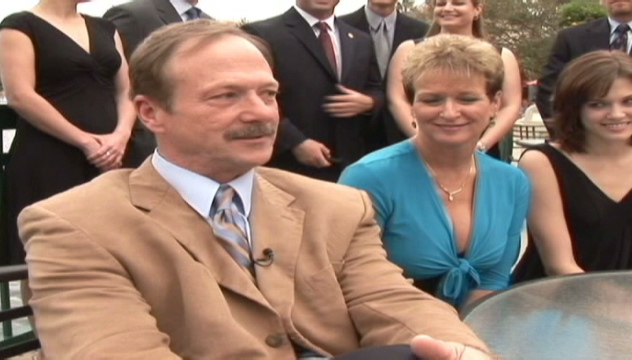
In April 2009, pharmacist Doug White, who was 56 at the time, his wife Terry, and their two daughters were aboard a chartered twin-turboprop King Air plane returning from his brother’s funeral. Little did they suspect they might soon be going to their own.
Ten minutes en route from Louisiana to their home in Orlando, their pilot lost consciousness. In a radio communication caught on audiotape, White told air traffic controllers that he’d seen the pilot’s eyes roll back in his head and believed him to be deceased. As it turned out, White was right: The pilot had died in his seat. With the lives of his family and himself at stake, White was told that he’d have to pilot the aircraft. Flight instructor Lisa Grimm told him to disengage the autopilot and take control of the airplane.
Following her instructions, White, who, according to one source, had completed only three weeks of flight instruction and had flown only a Cessna, “a small, less-sophisticated single-engine plane,” asked Grimm to find him “the longest, widest runway [she could].” (Another report indicates that White already had a pilot’s license at this time but had never flown an airplane like the King Air.) With or without a pilot’s license, though, there’s quite a difference between a Cessna and the one White was now being asked to fly. As Steve Wallace, the Miami Center spokesman for the the National Air Traffic Controllers Association, said, flight experts agree that “a turboprop multi-engine probably lands at a faster speed than he’s ever flown a single-engine plane before.”
During the harrowing experience, his teenage daughter Maggie revealed that she “felt helpless.” She could only pray. She also vomited. White proved up to the challenge, however. With help from Grimm and other air traffic controllers at Fort Myers International Airport, to which his plane was diverted, White managed to land the aircraft in one piece, saving his family and himself.
Kari Sorenson, a pilot and flight instructor experienced with the King Air plane, coached White in piloting it. She was amazed at what a fast learner he proved to be” “Doug learned to fly that plane in 20 minutes,” Sorenson said. “I don’t think you could have made the plane more complex or the pilot less experienced and have had a successful landing.” Grimm was also impressed by his grace under pressure, calling him “the coolest cucumber.”
“When I touch down . . . if I ever touch down, do I just kill the throttle or what?” he asked. The controllers talked White through the procedures for disengaging the autopilot, turning the aircraft, operating the switches and knobs, and landing the plane. After the safe landing, he and his family “received the highest honor from the National Air Traffic Controllers Association at a ceremony in Orlando, Florida,” where they met the air traffic controllers and Sorenson, thanking them for their assistance. That’s when they learned they’d been given only a five-percent chance of surviving their ordeal. The horrifying experience aboard the King Air taught White a lesson: “If you’re gonna die, at least die trying not to.”
5 Unidentified Woman (Colorado)
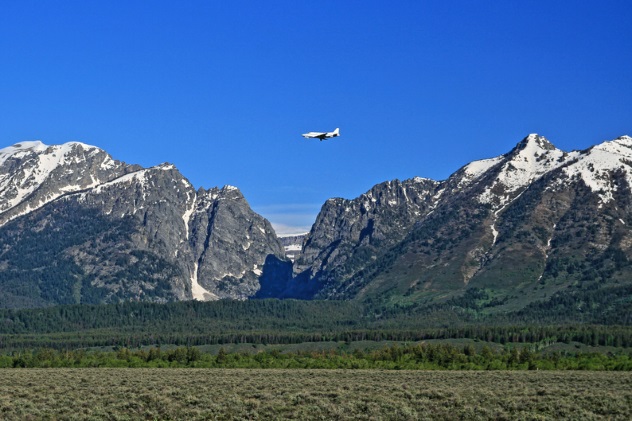
In May 2011, in the United States, an unidentified Coloradan woman had a terrifying experience. Her husband, a pilot, experienced breathing difficulties and lost control of his aircraft, described as a “single-engine, four-seat Cirrus prop plane.”
The incident couldn’t have happened at a worse moment. The last air traffic controllers heard from the plane, it was headed toward the Rocky Mountains. They’d lost contact with the aircraft, and it was plunging toward the San Juan peaks. Thirteen minutes passed.
Finally, radio contact was reestablished, and the woman told the controllers that she was trying to get her husband to turn on the autopilot system. She also told them she had no idea how to fly the aircraft. Fortunately, an angel of sorts was near at hand, in the form of a Great Lakes Airlines flight cruising nearby. Establishing radio contact with her, its pilot began to instruct her as to how to fly the plane.
Unfortunately, she was unable to get the aircraft under control. She shut off the engine and prepared to deploy the plane’s built-in parachute. Her husband had been unconscious for nearly 40 minutes now. As she prepared to pull the parachute’s ripcord, he finally came to and assumed control of the plane, in the proverbial nick of time. It’s fortunate that he did: “I am not a pilot. I could not have landed,” his wife admitted.
4 John Wildey
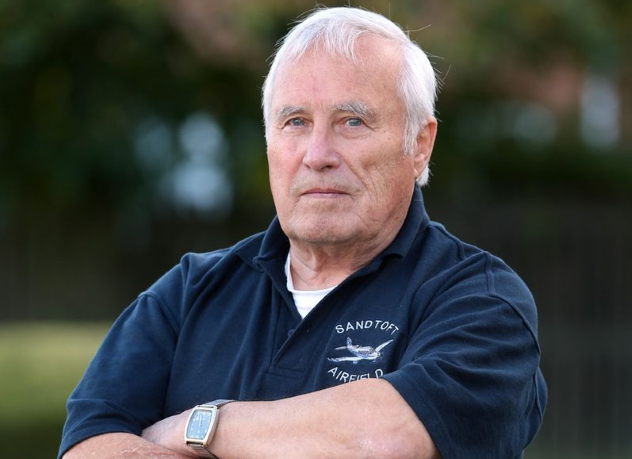
In October 2013, the pilot of John Wildey’s Cessna 172 flight from Sandtoft Airfield, near Doncaster, East Yorkshire, England, “collapsed in the cockpit” and later died. They were 40 kilometers (25 mi) away from the airfield when the pilot handed control of the airplane over to Wildey, who was unsuccessful on his first attempt at landing. Same for his second. And his third.
Finally, on his fourth approach, he was able to land, although a witness, Stuart Sykes, characterized the landing as more than just a bit bumpy: “It came down with a bump, a bump, a bump, hit the front end down. I heard some crashing and it’s come to a halt.” Along the way, there were also “a few sparks” from the propeller. Wildey characterized the landing as a “controlled crash,” adding that he was unable to reach the brakes. In trying to do so, he veered off the runway, toward a wall. Fortunately, he stopped before colliding with it.
However, Ron Murray, a flight instructor at The Frank Morgan Flying School, which is located at the airport, described the landing as “quite a good landing, actually,” especially since, without lights, the passenger “was absolutely flying blind.”
3 Troy Jenkins

Troy Jenkins was only 19 years old in January 2014, when he quite literally had to take his life into his own hands. The pilot of the Cessna Piper PA-28-180 that Jenkins was aboard, 61-year-old Derek Neville, lost consciousness in the skies over Central West North South Wales, Australia, shortly after takeoff.
Jenkins managed to keep the plane aloft as he radioed a distress call. Pilot Paul Reynolds, who was flying nearby, instructed the teenager to “maintain [ . . . ] altitude and fly around the airfield. Jenkins did as instructed until Neville revived and was able to land the Cessna. Jenkins had taken a lesson or two under Neville, but that instruction had been minimal and hadn’t included landing the plane.
The Orange Base Hospital examined Neville. According to his wife, Merle, he received heart and brain scans, but no diagnosis has been made.
2 Unidentified Spanish Woman
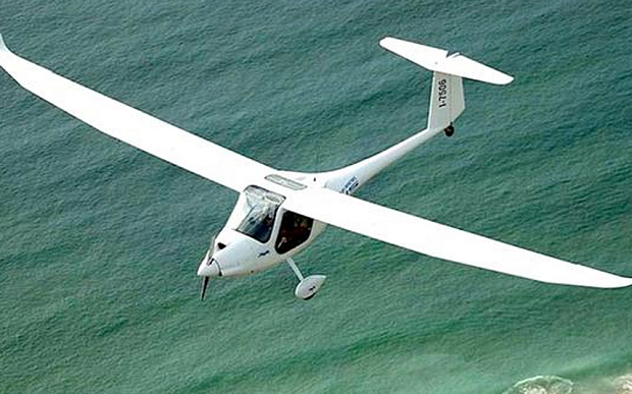
In 2015, a woman from Spain was in the air, returning home with her husband, who was piloting the airplane. Having begun its flight from Trebujena, the airplane was headed toward Coria del Rio, a small town near Seville, Spain. Near their destination, the husband lost consciousness.
Although the unidentified woman had no flight experience, she didn’t panic. Instead, she seized the aircraft’s controls and kept flying . . . for 90 minutes. She was unable to see the ground because the plane was above the clouds when her husband lost consciousness. To make matters worse, she could hardly read a compass.
Air traffic controllers sent a helicopter to help guide her in, and she made a safe landing. However, she came down short of the runway by 3 kilometers (1.9 mi) and landed in an orange grove. Although badly frightened, burned, and bruised, she was otherwise all right. Her husband was not as fortunate. He was pronounced dead at the scene.
1 Balloonists

There have been an number of incidents in which airplane passengers were forced to become pilots in midair, but there is another such incident involving hot-air balloon passengers, who had to step up when the pilot of their airship became incapacitated.
It happened in September 1996, near a highway in Phoenix. After a sightseeing trip, the pilot was trying to land his hot-air balloon at 11:00 AM, when he struck a concrete wall. The jolt sent him flying out of the balloon’s basket. After the impact, the balloon went out of control. Stranded aloft, the passengers had to fend for themselves.
As the baloon “skipped across the desert landscape,” the passengers maneuvered it as best they could. Although the balloon came close to both Interstate 17 and high-voltage power lines and all aboard were injured, doctors at a nearby hospital confirmed that everyone was “in good condition,” without any life-threatening injuries.
It’s doubtful, though, that they still regard hot-air balloons as “beautiful” or will want to get in one anytime soon.
Gary Pullman lives south of Area 51, which, according to his family and friends, explains “a lot.” His 2016 urban fantasy novel, A Whole World Full of Hurt, will be published by The Wild Rose Press. An instructor at the University of Nevada, Las Vegas, he writes several blogs, one of which is bit Lit: Short Stories Anesthetized, Euthanized, and Sterilized at http://murdertodissect.blogspot.com/.



